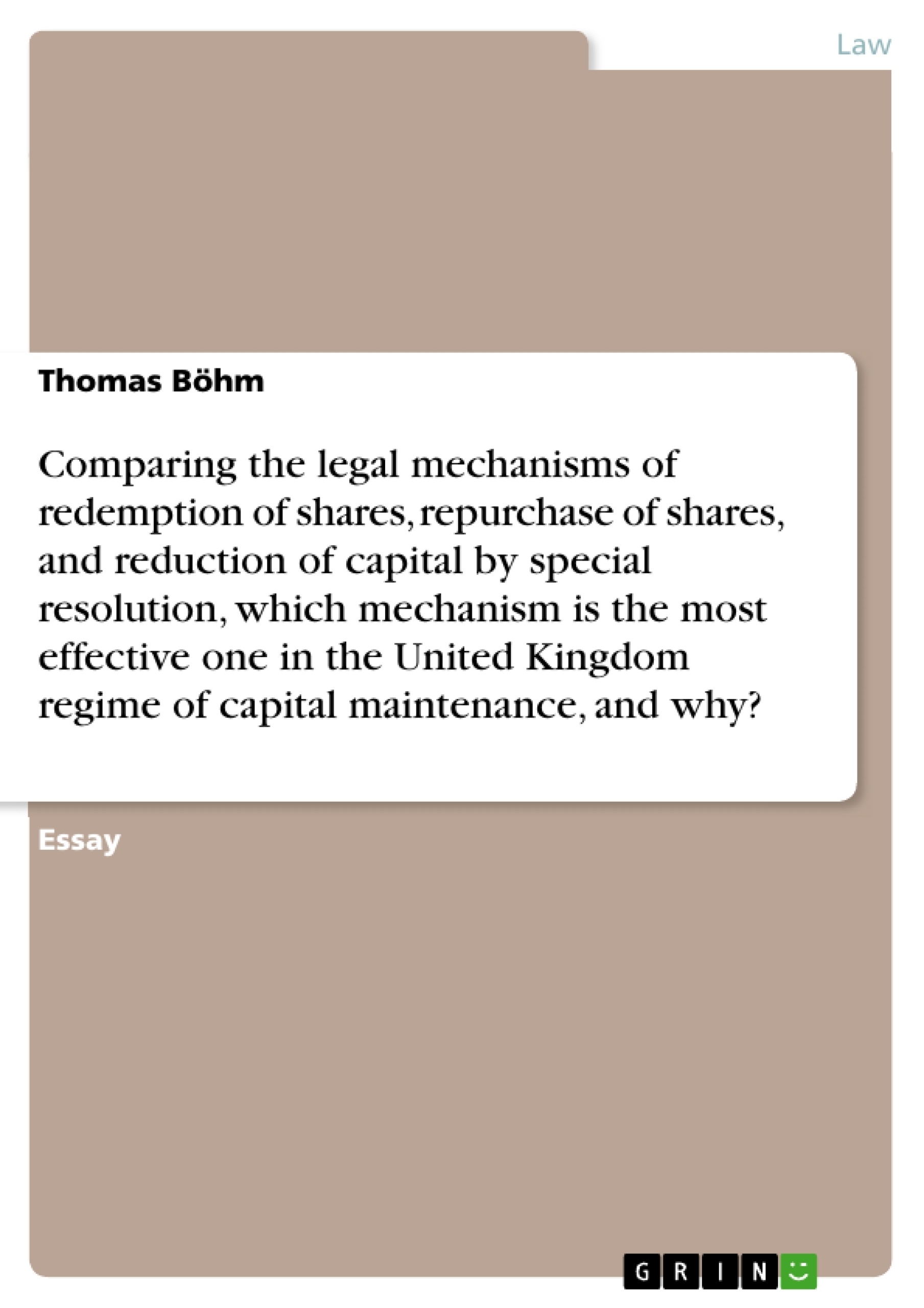In the lifecycle of a company there are situations in which the company may wish to return assets to its members. The most common option is the distribution of capital by way of a dividend. However, the company is not entirely free in this respect as the diminution of the company’s assets would undermine creditor protection. Thus, the Companies Act 2006 provides for capital distribution rules which limit the amount a company can distribute to its members. Furthermore, the company may also consider to redeem or repurchase shares. This may be the case, for example, if the company wants to return unneeded equity capital to its members because it can finance its investments out of generated profits, or it wants to replace equity financing with debt financing. In addition, the management may want to buy out a reluctant group of shareholders, or give shareholders the opportunity to exit the company. By contrast, a company may reduce the amounts stated in the capital accounts either to reflect a diminution of the asset value or when the equity capital is over the company’s needs. The Companies Act 2006 provides specific procedures for each of these mechanisms to ensure that the interests of creditors and shareholders concerned are adequately protected and that the capital distribution rules cannot simply be circumvented.
In this essay, I will compare the legal mechanisms of redemption of shares, repurchase of shares and reduction of capital by special resolution. First of all, I will discuss the general prohibition of acquiring own shares. The following chapters then deal with the individual mechanisms and highlight the extent to which they effectively serve the principle of capital maintenance. When analysing which mechanism is the most effective one, the focus is on creditor protection, since this is ultimately the primary objective of capital maintenance. However, when considering effectiveness, the interests of shareholders as well as the practicability must also be taken into account.
Table of Contents
1. Introduction
2. General Prohibition of Acquiring Own Shares
3. Redemption of Shares
4. Repurchase of Shares
5. Reduction of Capital by Special Resolution
6. Effectiveness of the Mechanisms
6.1Practicability
6.2Creditor Protection
6.3Shareholder Protection
6.4Evaluation of the Most Effective Mechanism
7. Conclusion
Bibliography
- Quote paper
- Ass. Jur. Thomas Böhm (Author), 2019, Comparing the legal mechanisms of redemption of shares, repurchase of shares, and reduction of capital by special resolution, which mechanism is the most effective one in the United Kingdom regime of capital maintenance, and why?, Munich, GRIN Verlag, https://www.grin.com/document/478220
-

-

-

-
Upload your own papers! Earn money and win an iPhone X. -

-
Upload your own papers! Earn money and win an iPhone X. -

-
Upload your own papers! Earn money and win an iPhone X. -

-
Upload your own papers! Earn money and win an iPhone X. -

-
Upload your own papers! Earn money and win an iPhone X. -

-
Upload your own papers! Earn money and win an iPhone X.

